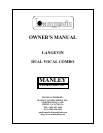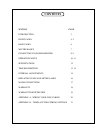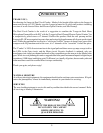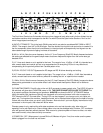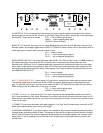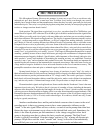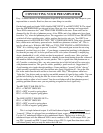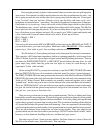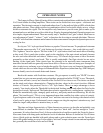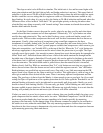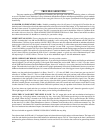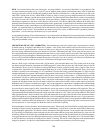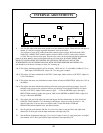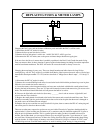J) DIRECT INPUT. This is for plugging in an electric guitar, bass, synth, etc into the Dual Vocal Combo. The
input impedance is high (150 kOhms) appropriate for these instruments and there should be plenty of gain
available. Electric guitars and basses may need a fair amount of H.F. Boost to sound comparable to an amp
because there happens to be a lot of H.F. boost going on in the innards of most amps. A jack plugged into
this input will interrupt the normal mic XLR input.
OPTO-LIMITER SECTIONS
K) IN / BYPASS. BYPASS turns off the limiter and its controls. IN allows limiting or levelling. This should be
the most used control on the limiter. Always compare the original sound to the sound after the limiter to verify
you are not accidentally over-squashing. Remember that sound is compised of pitch, duration and volume or
dynamics. The point is not to throw away one element (dynamics) just tame it and control it as needed.
L) GAIN. This is the 'Make-up Gain' after the limiter. It is usually set so that there is no volume change when
switching IN / BYPASS to allow easy A/B comparisons OR as the final output level to optimise how hard the
signal is hitting tape or to optimise the level to an A to D convertor.
M) REDUCTION. This sets the THRESHOLD of limiting and the amount of limiting. Turning it clockwise,
creates deeper limiting. We generally advise that 4 to 6 dB of limiting (levelling) is fine for vocals and most
individual intruments and 1 to 3 dB is good for percussive sounds and mixes. Too much limiting on a mix will
usually first make the drums quieter which is not generally desirable. The amount one should 'level' vocals
depends mostly on the singer's technique and talent, the musical style and the thickness of the arrangement.
Sometimes with very dynamic vocals, loud dense tracks and a mix that is not vocal forward significantly more
levelling might be needed. We have heard of people using 10 to 12 dB of vocal limiting with good results but a
bunch more extra care will be needed. In the pauses between lines, the gain will rise that 10 or 12 dB along
with headphone leakage, air conditioning rumble, throat noises, etc. Don't forget that if you are like many
engineers, you will be limiting the vocal again in the mix, so don't feel you have to do all the limiting during the
recording - play it safe. There is no Un-Do button, and the alternative is the dreaded Re-Do. Questionble EQ,
you can fix, over limiting is very difficult to fix later.
N) METER OUTPUT / REDUCTION. This switch is for the VU meters. In METER OUTPUT, the VU's show
the final output level like most VU meters. In REDUCTION mode the meters show how much limiting is
occurring in dBs. Because VU meters are not lightning-fast, you may not see all the limiting that is actually
happening with fast transient sounds.
O) VU METERS. These are smaller versions of standard Sifam VU meters. It is worth pointing out that VU
meters were always intended to correspond to apparent 'volume' similar to how our ears work and are not like
the 'peak' meters you have on your digital recorders. VU meters work great for analog tape, but for digital use
the 'LED ladders' on your A to D or digital machine. The meters should glow when power is on.
P) SEP / LINK. This switch allows the 2 limiters to act independently (SEPARATE) or to 'track' together in
LINK mode. SEP is used if each channel has different types of sounds going through it. LINK is used for
stereo sounds. When limiters or compressors are linked and a loud signal on one side forces limiting then,
both limiters pull down the same amount of dBs. This is so that the center image doesn't tug one direction
then the other, which is a bit distracting and wrong sounding. With this unit, set up BOTH channels for normal
limiting then switch to LINK. Some limiter compressors just use the just left channel controls in LINK mode
and while convenient is not really the right way. Those limiters "mono" the audio that controls the limiting
which gives excess limiting for sounds in the center and no limiting for out-of phase sounds, meanwhile peaks
in either channel can overload the A to D. The Langevin and Manley units combine the control voltages rather
than the audio and provide a more useful limiting function but not quite as conveniently.
5



